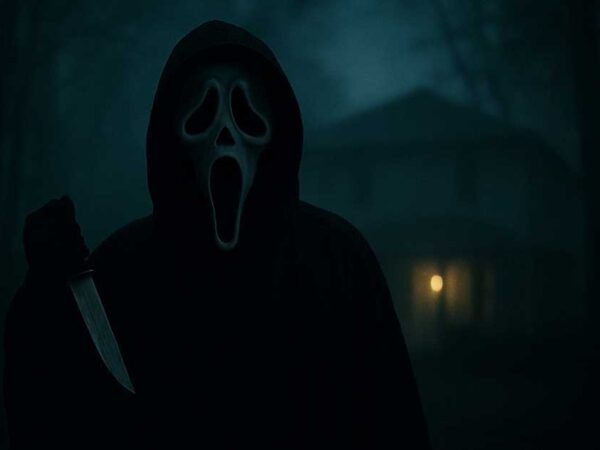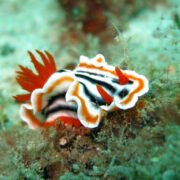The Enigmatic Cat Girl Who Defined an Era
What made Christine so special? Maybe it was her wild mane of peroxide-blonde hair whipping around as she moved with feline grace across the stage. Or perhaps it was the way she claimed to be a voodoo priestess from New Orleans, spinning tales that made her seem like she’d stepped out of a fever dream. Whatever the secret ingredient was, it worked like magic.
From Small-Town Beginnings to Stardom
The truth behind the mystique was far more ordinary than her fans could have imagined. Martha Theresa Pompender was born on December 17, 1923, in Dunkirk, New York – about as far from exotic New Orleans as you could get. Her dad was a gym teacher, which explains where she got that incredible athletic ability that would later make her famous.
Even as a kid, Martha was different. While other girls her age were probably sneaking candy, she was already committed to a vegetarian diet and practicing yoga. This was the 1930s, remember – being a vegetarian was practically unheard of back then. But Martha had always marched to the beat of her own drum, and that independent streak would serve her well in the years to come.
Hollywood Dreams and Early Acting Career
Like so many young women of her generation, Martha headed west to try her luck in Hollywood. The 1940s were booming for musical comedies, and she managed to snag small parts in several films. You might have spotted her in “Irish Eyes Are Smiling” (1944) or “Two Guys from Milwaukee” (1946), though blink and you’d miss her.
These weren’t exactly star-making roles – more like “girl in background” type stuff. But Martha was learning the ropes of show business, watching how the real stars carried themselves and figuring out what worked. By 1948, though, she’d had enough of waiting around for her big break. Hollywood was fine, but it wasn’t where her heart was leading her.
The Birth of “The Cat Girl” Phenomenon
New Orleans in 1948 was where everything changed. Martha reinvented herself as Lilly Christine and started dancing at Prima’s 500 Club in the French Quarter. Her signature number? A “voodoo love potion dance” that had audiences absolutely mesmerized. This wasn’t your typical burlesque routine – it was something completely new and hypnotic.
The way she moved was pure poetry in motion. Critics couldn’t stop raving about her “muscular control” and called her performances “nothing short of a work of art.” But it was those cat-like movements that really set her apart. She’d stalk across the stage with this predatory grace that earned her the nickname “The Cat Girl” – and boy, did it stick.
Broadway Success and National Recognition
Word about this mysterious Cat Girl spread fast, and before long, Broadway came calling. Mike Todd – the same guy who would later marry Elizabeth Taylor – cast her in his revue “Peep Show” at the Winter Garden Theatre. Running from 1950 to 1951, this was Lilly’s big moment to prove she belonged with the theatrical elite.
And prove it she did. The show was a hit, and suddenly everyone who was anyone in entertainment was talking about Lilly Christine. Radio personality Walter Winchell, who could make or break careers with a single comment, called her “genuine Gee-whiz boy-bait.” Coming from Winchell, that was basically a golden ticket to stardom.
Pin-Up Stardom and Magazine Fame
While she was conquering Broadway, Lilly was also becoming the queen of pin-up photography. Magazines like Esquire, Rogue, and Modern Man couldn’t get enough of her. When Esquire ran her color spreads, they sold out so fast you’d think they were giving away free money. Her 37C-22-35 figure and that butterscotch complexion made her every photographer’s dream.
Here’s what made her different from other pin-up girls: she had standards. Lilly never posed completely nude, preferring to keep some mystery intact. She liked calling herself a “belly dancer” rather than a stripper – it sounded classier, and class was something she never compromised on.
The Art of Mystique and Image Creation
This is where Lilly really showed her genius for showmanship. She spun this incredible backstory about being a voodoo priestess from New Orleans, born to a Norwegian athlete and his Swedish girlfriend. Pure fiction, but she sold it so convincingly that even sophisticated journalists bought into the fantasy. She’d talk about her mystical powers and Caribbean connections with such conviction that you almost believed she could actually cast spells.
The reality? She was just Martha from upstate New York with Italian-Polish roots. But Lilly understood something that many performers never figure out: people don’t just want entertainment, they want to escape into a world that’s more exciting than their own. She gave them that escape, and they loved her for it.
Legacy of a Cultural Icon
Lilly kept performing in nightclubs across the South right up until the end, still packing venues and leaving audiences spellbound. She was even being considered for the lead role in “Sheena, Queen of the Jungle” when tragedy struck. On January 9, 1965, peritonitis claimed her life at just 41 years old. She died in Florida, far from the bright lights of Broadway but still very much the Cat Girl who had captivated a nation.
What Lilly Christine left behind was more than just memories of great performances. She proved that with enough creativity, determination, and sheer force of personality, a small-town girl could reinvent herself completely and become a legend. In an era when women had limited options, she carved out her own path and did it entirely on her own terms. That’s a legacy worth remembering.













